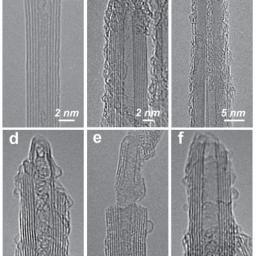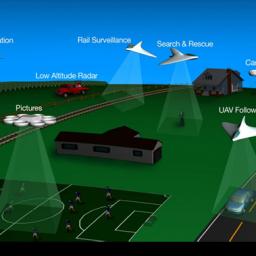
Typically, September and October are a period that sees an uptick in sales of networking hardware - routers, switches, and the like. Not this year. In fact, industry analysts have noted a drop in sales, and
attribute it to increasingly widespread corporate investments in software defined networking (SDN) equipment.
Industry heavyweights like Google, Amazon, Facebook, and others are already heavily invested in OpenFlow and SDN, but it seems to be taking hold on a much wider scale, and not just in ultra-massive data centers.
"We're at the beginning if the S curve [in SDN] with Google, Facebook, Amazon, and NTT adopting and a few others actively deploying it, but it will be several years before it is mainstream," said Guru Parulkar, the chair of the event and executive director at the Open Networking Research Center that works on SDN.
"We will build network infrastructure with white boxes running merchant silicon, open-source network OSs, and services. This will not happen overnight, but it will come."
In the SDN vision, many tasks will be handled as applications running on Linux servers, said Dan Pitt, executive director of the Open Networking Foundation behind the OpenFlow protocol: "The future of the network is Ethernet, x86, and OpenFlow -- nothing is controlled by a single party, it's all community based."
Bad news for Cisco and friends, but they're only suffering what the desktop computer makers suffered a decade ago, and Sun and the rest of the server manufacturers before them.

It's largely bad news out there today, but here's a bright spot to start off your week:
Earth's protective ozone layer is well on track to recovery in the next few decades, per a report just released by a study financed by the United Nations. The good news is due largely to the phase-out of certain chemicals used in refrigerants and aerosol cans.
Without the Montreal Protocol and associated agreements, atmospheric levels of ozone depleting substances could have increased tenfold by 2050, according to a summary document of the Scientific Assessment of Ozone Depletion 2014.
The Protocol will have prevented 2 million cases of skin cancer annually by 2030, averted damage to human eyes and immune systems, and protected wildlife and agriculture, according to UNEP."

Nearly 20 years ago researcher Alex Zettl of the U.S. Dept. of Energy (DOE)'s Lawrence Berkeley National Laboratory (Berkeley Lab) synthesized in his laboratory
a new material never before found in nature: boron nitride nanotubes, the strongest, lightest, most thermally conducting and most chemically resistant fiber known to exist. Now a startup has licensed this technology with the aim of manufacturing boron nitride nanotubes for commercial use.
Nanowerk reports about this new material:These textile-like nanotubes with the appearance of cotton have a molecular backbone 100 times stronger than steel. They are as strong as the better-known carbon nanotubes (CNTs), but much more heat resistant - up to 800C in air and very resistant to many chemical modifications.
"So far, it has been generally accepted knowledge that BNNT are highly inert to oxidative treatments and can only be covalently modified by highly reactive species," Zhongfang Chen, a Professor in the Department of Chemistry at the University of Puerto Rico (UPR), tells Nanowerk. "By contrast, oxidation of CNTs has been proven very convenient and fundamentally important to modify the nanotube structure and morphology via controlled corrosive effects."
There's more about the material on Wikipedia.

With Google and Amazon unveiling their new drones,
NASA has called for private partners to join its ambitious plan to create a low-altitude air traffic network over the US - that will be run without human traffic controllers - within 10 years.
In a tender published on Wednesday, the agency's Silicon Valley-based Ames Research Center encouraged "public, private, and academic organizations to collaborate with NASA to conduct Unmanned Aerial System (UAS) and UAS Traffic Management (UTM) research and development with the collective goal of safely enabling these operations at lower altitudes by UTM system."
The studies will focus on mapping out corridors and no-fly areas (like airfields) creating a collision detection system, and programming an algorithm that will allow drones to safely fly in hazardous conditions such as rain, and strong wind, which is a particular danger for such light objects.
 Typically, September and October are a period that sees an uptick in sales of networking hardware - routers, switches, and the like. Not this year. In fact, industry analysts have noted a drop in sales, and attribute it to increasingly widespread corporate investments in software defined networking (SDN) equipment.
Typically, September and October are a period that sees an uptick in sales of networking hardware - routers, switches, and the like. Not this year. In fact, industry analysts have noted a drop in sales, and attribute it to increasingly widespread corporate investments in software defined networking (SDN) equipment.

